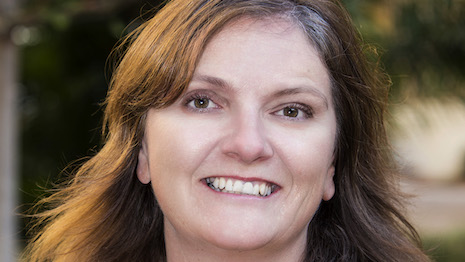By Kim Lawton
Over the past few years, we have seen an interesting trend emerging, and it is having a spiral effect on the economy.
Instead of acquiring goods, consumers are increasingly choosing to invest in experiences. Trips to exotic destinations, brag-worthy dining experiences at five-star restaurants, and pricey boutique fitness classes are as sought-after as the latest designer handbag.
No things
The luxury experiences economy has become so popular that it has grown to $1.3 trillion, and there are no signs of it stopping.
In fact, according to market research firm Euromonitor, the global experience economy should reach $8.2 trillion by 2028.
Center for Generational Kinetics researchers found that 74 percent of Americans prioritize experiences over things. What is more, this trend is prevalent across all generations.
Baby boomers are entering a stage where less is more, and more than half of millennials say they value experiences over objects.
While researchers speculate over the reason for the shift, Milton Pedraza, CEO of the Luxury Institute, believes it is a direct response to the proliferation of screens and a desire among consumers for authentic human connections.
As a result, brands are investing more of their marketing dollars in experiential marketing strategies that bring their heritage to life and create opportunities for storytelling, all while building relevancy and community around the brand.
This sets up opportunities for engagement with the brand and with other consumers that create lasting connections and brand love.
People now recognize the brand experience as one of the drivers of luxury.
Opportunities abound for brands to create immersive, multisensory environments that fully embody the brand and entice like-minded consumers to experience it.
There are endless ways luxury brands can do this — from ephemeral pop-up shops that create a once-in-a-lifetime experience to multi-city mobile tours that can generate buzz and introduce the brand to new markets.
Put your brand ahead of the curve
While many companies are adopting experiential strategies, there are a few key elements brands should keep in mind:
1. Build anticipation.Use social to announce your event, and invite consumers to participate. There needs to be an equal balance of exclusivity and inclusivity to keep consumers engaged.
Fashion designer Alexander Wang did it with his new pop-up StraightOuttaChinatown. By announcing it on Instagram, he invited everyone to participate in some way, even though the event itself attracted celebrities and other fashion influencers.
2. Make it relevant.Create experiential strategies that appeal to your target consumer’s mindset, and then create tactics that are tailored to those strategies.
Chanel created Coco Game Club, a playful pop-up on the rooftop of Paris' Galeries Lafayette. During the four-day event, the brand created an exclusive arcade-like space to present its new Rouge Coco collection.
The pop-up attracted consumers with virtual games, professional makeovers and a party atmosphere with live music performances, DJs and bespoke cocktails. In the evenings, the space became an invite-only event for influencers and other noteworthy guests.
The brand’s investment in gamification and other experiential strategies introduced it to a younger audience of consumers who will continue to grow with the brand.
3. Create community.Consumers want to feel like they are part of something bigger than themselves.
While it is essential to create an experience that connects them to the brand, connecting them to a bigger community of like-minded people makes a larger impact and builds long-term brand love.
It is this type of community engagement that Rebecca Minkoff creates with its RMsuperwomen blog.
The blog, and the brand as a whole, rejoices in the success of women in everything from motherhood to feminism. It helps consumers connect with the brand while also breaking down the idea that they are alone.
4. Craft learning experiences.Consumers love an opportunity to learn and share information. Make it fun, engaging, and informative, and they will rush to tell their friends.
To celebrate its 80th anniversary, Hermès created a pop-up space, the Hermèsmatic, that traveled to key cities in Asia, Europe and the United States and allowed consumers to wash and dye their iconic silk scarves free of charge. The bright, fun aesthetic intrigued consumers and invited them to experience the brand in a fresh, youthful way.
AS CONSUMERS INCREASINGLY seek connection and meaning in the things they do and the products they buy, the luxury experiences trend is likely to intensify.
Creating immersive environments that show consumers what your brand is about and build emotional connections with them will establish it in consumers’ minds and hearts.
Kim Lawton is founder/CEO of Enthuse Marketing Group, a New York-based experiential marketing agency. Reach her at [email protected].
{"ct":"ohJ9MQtp6mSp0R3l+DYyFgSmyz5uxgpOZw2j9D1bC9P9MpRxoQi8PuISgr5dEo4Q2s9lusHU2gdx5QzYQnnw4ZfTJvb7M9umHjXzfeHAndHEjg+hICejo74HdxLMXVDxad9vG7EVG1Yga9iBnOoJ6lphrg4+XiPJtTgb1dnCt43mMP25JjRuFJj+6ZONuabvbuHfbmFAK46kfscbGMvfAWO5Y4pBOPAucSxAQtwKcGHiIndQfrhcjZ4I3+Zp0bWonej5RYAndBMTGn4955pP51omGp6WMM5jkUcUOkUin756W29dHyI+MRKEthvUBhMDSIV9gJQHfD025x1AEo1l56CFpeN86JXzxH9snJQW6HpJdLUDq8VMpEOoMjN+AVbEHrFlVKx\/8UCBqUOjtoNePy9nLGbvi\/gIg+6lJtzaP5fe7wNCtsEx2PPn4hczR2VhVGhE2qKg347TlBgZ\/Chfy0SAOZnGP5EDRHPYpmNieD9JvgtKFlOYQ\/bYYOfRkOchp9Bf\/TJNR4MpHK08SUt9axEDryZuPFoQTs+RMahrVXIb4+8M1KGpDXcEVBruebOHaftjudkRY2lyU3+hCkIG5ggmMCw9DAPrhL+Fit6h\/2Hld90xdv\/tQOKcdE+BR6z7ZQmvGXNOygCH0o98r2kVu5DHwBXJmvscuvgxvnraAggzRfqzJ2ZAd9\/jgvtaWJGz31CIWpFGfjKWNERNUku6FgKzAhjM324ebZghCLCHYfjKZV06rmjCQD\/BxFTKX4Fzz\/jjeagTjNRdnBiBLx3RZMsV+VjPRXdZWxk+JLUIQQpxzQ+ixMqKLsgNqXq39Cueo9h7ogxsVk5NwNWS+5VOKrrIEnXmIF1t2aZJfLSVNuJLVEoSAMrtwzdW9lZzrJds5sEUTiWBb6oGf9K\/UZZ192LPe8igOuoKYUjoZPr8wm3JOM16PX18rMVdxltM1Hx75dqM0dxHm5HJzQGCu3MFU9nsGoeS623MzId0jM2\/vkdIOZmmRcSFCKlbpDiGiiiq8SqxA3YvQpk2Sp9Miov+Hb0zxCNTS462EVqj\/oFQFtooq4Rh2+vJuKILrFneHniAzG2hcf5pS9syp9cl6a+36dZETv29x3yl9BV2ZHrlLUZvCKyWQeavV9F9EWGgxLADt+5udKS9vBa3Gj+Br6EA3F6bgSRqAgAwMJZ82G50yhEOKbAX5U+KAMR3wzPyxtRkkFGtg03knSz+V0814fQAzj3h6D+kFHK12mKnWJoCpxI3BX993Cw7awX8RLcNgYfWZ8vzeO1q63HmtaiFngBGVgaBiLclL+yDYloKdFaBEwl3\/10pUSHwoGzM4Ym6zvxVe89kfUc68rFC43E9GUjYLKgAmfoI9\/mbZSq5DTwNpRvl5N2A2Ph70YqW\/3N7W\/L9LbkPIXWzCoI6CfO8IwVaIP9JMqIh3RPkibeZKQ5DCG0MgZoAuUuoWUZOepOfehCx2JTFdC1qu1McZqvuNYIXUgTWSQMm4Vg1XP3JdQDkmidLER0Gu5BLKMEmIVxeRdbZlynsSk3ASv1PvaGSdiF9cDgYOhLP3iDE72t4JOV0Y\/nj0Vaf+tUtUKw90qLpY227HHOlLbJZNtl7Y6pzimyFYwvu3tDRofY0xOAoJqzKcsSUBpD6yBpWdNgdXYxWuouDusOnQr2DopPoeIQj7xAMROENQNiyb2BhkxKVUMK\/FD64U4eQUadAimkt4vkjbWB4PnWLLYkyXgnDeKicfx9Gwat20\/3i+2ocvidjoRrv2i197d+PiuSFQQdFsKcV1s99LEMfWxcjn0HkK5\/GUg5JaL1CBu9EGa48Mikd3xLRt+\/vGmVcbV4xX3QlOBzTva0Lt6WXdwXH0fchZAVFxiXoNo2UZYTXr09GGy5z81beePTGdbkYLIcficBeO+VbIrGBKtlI5MvYD9B1O2D9VoSDSKSD8+xNzcOgsSUUHsSQyJzkf4db8i+rGalg8rBJQ9m7HlstPd+DlL3P00AEVPG87mEVPvFSJBCKc5e2ch7c+6dtqhGtR3PXkZs0AkhKbUIp4T\/De6JfEh6\/ygpzP+S8\/w0Pxu5mxDl2nLGr4rXt1mtkcppSNHU\/md7E3oJJR+zZNSdIMVf12Gq6BaKme\/kew48ttOPK7JIs9hvsvkz3Ig2gq5cZxPh3nh\/DILsXt3VS9YyoQa7VN5\/94pNlPPTkq8k4W3gPSG1b0aPF7Z0iFejRJ7YnGzcB1QQoX0k6kWZcEjC3imrvM14eLTl\/qHCfvKm593C12tMcB2J\/oAtjQRuvykZLy3TtzAX23GL321trzXB07vSZfwtLEsINh5YsFFGSovUwBdFbZp7i85\/3TdJ+JZ8HGedI1+CXM0UEVHd8yyRh6+HZt5fouKJ47xO9Jpisxd1svcXFwEyS47O8psZq6IHEbANus9jxqgWeFmAbgt2kc8HTRtlG2a0XoDJjQs7LX5M6CqgjR7N4Je8PPaQ87ojFjGjnNqeaZ8akqPNtGOIF51IDN2b+yRqrrjrfxyL+qeQb0sOCcjGBRmC9iZ9SJMoz1ShtXT13TIBRtEjzw8q7pQtLS1LBLlKlDdnVDaMXy3C2QPCQ9aQcOg0j4It0XUcGb9mxQVTlV2N6jocBVTuHK0SiOPtCZTUeXBx2UHdeu2A\/pjZKeD1DdGToTYwCQRbThNZQI5PD\/auO5vXLnZN04s4oB6qYUiSBHszcOkPhtiAdXIzoSWMAj0HMN55J2MlK1tC6H9vHJppBCyX5WylEwPUJZN7LHcz+dedJWHK5MM5zbNpsRaJGHmuAAPtGPwK\/fNWXWfg7FOgT3bJJ6epXfU4MNMqlSHF8ZYy7qJkLKk9LIwUwbv1oJSuHsFSsj1LtI5lQkjA+9xZKz8gKhmpxuFUA+cJ54drUkvm0grSGG1+yS8Of5dos+RS1WhZBbnmcKGoEZQIpuYx4L3k7Kdlt+mM7+iu1MFgvUauPOE6V58g7SAfCOyzIV2UUfrmhlVkw4mlWustjn\/igHYA8WjtIcg2olTqt2EvNaOqne3ByWSmWjApqneX\/OLMYn6L47mhCYK5xD\/j5mznmyioCXuiz5Jo5rpobzfPFtzyoxoUbiDD2bguGoYtIueE+Uo9pvYeSR9utEW97QFU+p5MJiFsbv22ms6VRdDYuT0CfQFp9u628pEkc4fRjCAKzFM97We2N6Eatexmqbatjci71LWnuJtOMOop5bLKnAg0quPVMkdW2M6ruvedv+Zkm6YZhIzWXHQwwKg3ULKIJgwriBAE4nv8bk05XvyKYQjAOTX0sg0im3sXdcYSw3gfY0w9rrUuwzcUcMsewS87jgfa+jicGfCkO0Oki7HKM5cW8u6Mt63zkGEu7NpxH7YsEPHc0zJiWA8Q7vaVl4NVgHsWaztHG2w2rSUPi+HgHGN2EEOXoLomzMoyJ1QRBpDBiP3jQohZCTZ1Rqq00AOk6\/eOdKNsU8X50KEXmSW4vJqfQswIrHYBLvOsc\/Wpu\/phzbH6WG+5zS2S9m1DkfAaUY07UCq2RTp+V7uw8Bxu63+1NioHVdHtm6Kav\/8gOCq4+VAx+pQkUvAyRhaoqpYj9OqKlrIABzHPtEAQfG5YEOTebi4JZC0124pqlOrQ\/Ife2OFYBx7GAcjM6IYPqCwd2SveUzPZLoZIe2KIjic\/34o2hFJ7buGS0vFx\/JQQl2ZcYPHwdxnCLj\/ZDiKIoPnpqk77FhG9cGW+eVrDTNFRyXaslqbD5L5YY2Z5DtBZCQwByhvvOw2zPn3gw9Sv7RRYG6kz7\/\/1ERdfblCthy\/pTbN3jMY39GNSwuVs53xGcNA12ZaloQ41no8H0qS0fc4bOcb2Rw1e9YKpxMs0UzE1SYvNQKCvuelruF7b21wGKDAWwtw7nR8g4tZymqW1LBhFQJa3+dybIuD9dnop527PfxYtJT7twxUHhBqIaQdXIe2Z0fPtf+WD+KNn40LXOl64dZu9hpbxef6mKu5A4tel0ltmrJ7EVlcvwAHq52siS\/s1go72\/c1vkUzr2No0OsT0yY7TdGZzSZ7xRo3v76m2YnjfHrsTmQczWSMFO5KPeMZipYnVuPcrymaiGXe8LtzYCmFOMusHYHZhfKrE0+vDh8iyG\/EF1UFf23ElQugmu67YvEjVBRxQAmGLDQ32fAfQMN3Z0MiJ741KvYlZQ7aWW+b0UNyzC2xaMI0+ENpuRZ36dWW2\/9JlmANncahplMZrDQbsk8qxcZy0tCRsAnHTYoIh655qy6yHPYYP6HYz4Ul1GRjDZ8VJvF3+d5jUnXDFuTxBv6GCQ2BtVTEYbYF4TWf5CtvhtJukeX+dL660Btnxf\/WMOz+peGzYgvY\/Nj2k5BUJim0ozGe9d2LWxSKN5u31B\/XrLoLlmFG10pF1sRXK1FgWSbTlltMI5iRTBaZB5fCh\/jXKhlEBAheHQJXM2yzip0GaBf0q4Oyuy8FC+Ssygg7yuhGgLoLqnRcFizzWVS1WgpLqJ4NslJ8b1oc4VHltgKbjdwO3Im6CfCWOISaDOPMYw8NaOus2URGE+ZmKpbzm7p78cQW2GTIM9CCIadqrI8jPfDDdiot5UlLRDd4qOOGBpBn6V0KqIkuAxf6Wf7uEwy0ARYQpj88Iteu0StSTTDNuNYY7Bi4BM+RK1YSbj6+q7JqIbJc\/flYPGyZmWykchMPVd0ijmCLbGIoWJDtIcsISrLUX5JH6oEDbGEBcbGRTth87yJ7jagVzCQFgObTDbssGUfHx3\/FUa7e\/5IJN7ep\/JBSshSpUCD71j8iJzNPQnbsVKHqYUjRqi51TilLXFN89XTdtfttdd36+BfQVq3g6V1myODt7sjiTwmrlafOb599TYOEiZu5YcBu8XbIep+t5dUeK5tseefRuSAKEJwSXf3nmFY3jpeGHhpHKgvzCDbn1rYy7zPeUIwU2H1dHdgfMlfTo9f6m0tbFXUZ1+khj\/cMWlcmbIbjeHnuhFNc1bAKNK\/JDyzq1W5ACagpdnmGSJmqq\/a\/pMScvm6T2jONshxXjc+Fh46JheKuhEjJeIUBzwsICllLLwUnZNwAI8F24ddyswVC\/hAFDS5Kw0tFcnsg8VzO8Wdv0rv1YJUkYhJpIQfZVXD9zDth8juqFTb7mBN5DdWLX4fpQ1tETAMRwxLZwFFAlT0qsrJNLVUQrBGsh1Qf4AmPigqNDddRrm7LWG9RA2ihegzqwxSDABn+LZSKpvkkvrHfRFrTv4zI7qo7KqCOVeKSviGrQbFzhG\/a+jv0b6w2agY7MQhtFeeSi8ev\/Qksd0rbv83T\/ixHbj7\/w3N4HiZ7X6O+xpRNjPOddIlo6Tesp6YwO2C8ZbKg6tYwo\/e\/KeAVN4QkwKLBu0KOpM+Xbt1VaovPzP0i2fRLpQXs7myySejg4ST\/\/Ui\/G\/gLt25ZI9oQ117jKi\/FHOrK8veP8\/Um0Oz\/goGAMbstsBsls88Z97kLuW6wgunWHwGHB1RSPJ77Fnk9Im99kUsWYhWEyuX2FrogqVVyKNQhbaBSh3qWX\/8D6rIq8\/HiSgrlg7W71pUKTP5oycQE3IaiTo0+nSpiAwefmPRdQ+sLSCEEkoYHdhfrp3Ne3oc\/WPMFrAgYVc8Shx3PAql7TeMcyXeUfQ9HBiIu09jhT7Ae\/ittAEd4xw13fsqGHjtYOMkN8zcm7Ex0ZDAKrhMOUGAhL89ShFJ29ABVNSVWerrb9w53YV33oUeR9dQ+Xk2RrcyEcT\/UGR3rbppl3tuuAZ8epOmwqpNeBQLHbqIodK6ZrSCBLUCmK5CsdmbGqx1d4jq5MoIvX2nZCpZB98ZCyUrzP8icpiYAIdgY5jP+m2zgokEOkZTcsQ5hQRnXJWIirXj0wLdvzpblRykHUt4CECv7REY+tx38O9K1lRxIMvpVH2AGCHPC3t9RXiaL1za8FIUoUSSKU+ie6Cbjkcap0Jv0hxUbRGX+2W+hFbwceBOpofrDNDeXpPljkkEbet9HoMOTsdg9L1lvQM5AVDv5jUouQX9OwGxAyLPUJ99mZiiDuZBqbw3X\/Knkx3DAKRrMPEmZl2vYzxXjVf2YeOGJubgLboOFWUgpV4JF4jtnojCuFXi61qYnaINacr\/7PFcEYob3lv4zhtnWkYiBbfdOM\/p+9iXSbB1FYQ3PuQ8O9bBP1+ChLLgOuukf6HHr5L4yMd2M7C1JSO1ELieY6kbM8nS4xaCI5sH091bOYC7OnyKx6jYkCuAbaPBVNI96gjk9FPZGUf\/TMDNtPLlK\/1cqybGU5gWOT5VEevcgTZ\/dXLlwW5T6gPUbEk9uiAQwgJLps3czkphrehukZ\/HmBMak7CWOVaeQ3e\/cVJIh3c3Cukm1mGeXodp2gCFwkxI6rE5mMF570Q22yjuKcPSMo293lUyiC4ZUMzal1I1xYRxkntS+qeqvYKAD\/iMrKQ1QpcY8Kbilb+iUZ0ydQDDnb98dd52zmpLy+oVCypaDhr4\/WdyHI5VHG0Sby317+t\/jlvBBO0AlSz6wIEUojbQbZz5ynhMOEZ7gP0q3rgV1Vybsj8luurrvMkZXR0CPaAhDpEAI4W9HfIyZvrBymagw68993uhovdnGhZAAEe5f84GD7vNeyvc2YlCqwfehhPsXDcsJWdQP7vZHVhuO9KyP+RT6xYVkBzIqGzsEnS5+sOD3LSapoZEMo5V9NOIu5GXT5E367pWLKZlEtVUZrRk+SW1avd0mnVRzYfc4bmLLCaEvemcOUf0fiZ3LpsSeZucdO8EGEg4SxgynUQ52CuE6\/shBymEsD5nwAnT3oXoCZgVD5Ixn290r\/mAN0QKzl8ou+r4caaMtHZiIclAR3Vs+rYOWk7p\/pQHR0qd\/A6E4IpZnbGmM5Is4VRQ2r8JDfHxiadoPgZHOgxLnnGtnPQEm8qShHBaLGw\/LqfdAak2MX9fG1Sdr+xIEHWSYolr7Y6o0mk40pRsSfbXo29FiAKLdoVH7B65r2zlYqVdDK5sm15KQl1h9hGc1ZPp9PJS1UI9Y2iBUdD1YMYMYLmbCO4hdzkKGxd\/sw+SAUs5HpZX7mmFRWgsK+aQjhBo0HI+CtBkx7BgcCdAxbT8nntv\/Rq7X3IEXp\/Trhux9rlnJe8FInKpY8yV38KIhaPK0iJt4Pbdd7r8MHJblv1tRXFRnLcXKHl49K1DfVSwYgwDoK\/cX0HMnSctOAkCPjZ0+zhMyEnZcahuwtsg3brw9rKyu286kAZCPepu+42xIOmUxGBjS8yLzze\/6\/11lsBUdUeQGS58KAxaNl+1xTMmeQZLDxr+cZ9NgzIWY929Hv60Hgv5nU8SV30lcPPsWb+aDUCoCm5DSV6Tsp8b2rgCHpKrTyMiu+\/6Gehv38CTsOD0N6Os1O57r3P2bOiJCYA14daJHKarqEVQu3ezZApb2Rv9VShWEElAfDdhOFA0PsMqgz2ak3++UmvuGmOhfDBkWttXJ5X7Lh9nWYYL56YnUSVM3PDNNzIiCUYR0bDa5LCUCe4nIfDThXG7mQ2vtQ\/XhZEbGOKQHrR9ocBotOREfnKzcglbY5m4Q+5Tu\/2pVow7Fn2p5EoZGRPsHMzsJ1fmSxxlwLKEJyUgF2L98+28ZobX1NstfpXGtQRkpX0WK1c+2O21XtzPjv5D8t3xA18Ih9zYvwSqw7hb9bS6J0Se2b4LI46u9iY\/80SrsPmX36TqnLeZtLrEejKAqBzOJbYL+0tzLjXpBE1WHTTP4mR+4y54ldq58E9rNOvuNkglvt5GlleQ2llur8XkyHB3SvGGi7yvz+wNNKphh+WQKcZRNOsEGOaf84Er77rNaKaamFRAk9zQa2GECcqzmgX6BowjtZ51Mn5m8d\/\/MOsu8xj+WzYkUCAC5rQ+T2dpG2n55WoXK0PzzOxlweGeNZlfLg73I4\/OrDW3Q9gS7ArOwlqVWx3tZuQJVb7viCyS9+ANRWc8hrQO5ZlnFrAItuXoZmUdPHzWPpPuf8ZbT3\/NSOSHivRPUO3pCiFTcc\/RagOK6I6UoeVsDXOJXxx1EyovLOsTnIUFT7wHLBACxKQ1lk2RXjqU21Tg\/BwIArbboVpZUztAbVPdN5lk7QExekrH5tcY0giLaM2AcEEWHU7H+mFpSoOIyAqY\/Nhq\/wfkLXblyXa47\/O\/J3cOA0MU0KAuMMe1NLAz\/m34+WaLmkazWhAYj+Kgcspd+2U7W\/GB5TAxYjdPt5z6WHy33ghX9ooEvhcleSVsZZYGXPzdXmEsvvbZO4CLalWz4jPJkAlrgw8s65TWCqsu0h1DLdlD6fGj+ZnzV6MUfpsAaA0xO\/1zaSWiris+eEKm3WUMsJ+tKSjWcaJSJmIw+E1ye5K554AhO7JpmLbVQHbFduH2DFIznHOVicbzU0vcropgVrmm41ERw2iQJLlj4A2NiBw7MaYXdt\/4g+gAm\/kah2VgrTlEdXPqqjyeTlj5an+0rsLeMKXYhXvRWDf3hFRKKpPScYjcL2PKWz39VgGVlRZ5MCX\/+ZczPsftHKCtuue4Z+c8sLDgl7og6A2I9pIj2FFPoFdAz6isMm\/glSn624HlsHgpf+WDCOe6\/dKyLSlZi3Bzh\/SPhFm2SyT+gqokRLDO7Txn+exvnDLB0q\/RTOquq9ycCXojq4ccNoIlTX+Nr2nNwdDfboXAwYUdgDhTQXYOT+E4bCAfMZgoq7ebs+fuHVOwPvy9a0qKVPwC4U2PU\/F8QNRXSOZu16mDOoHvoiYC7D+DlEdznRnVIjW0xyw8BFFB5dqWysMBdhKtd0UT5wQU6+4PxdddA\/JB++Gwa+yVyx\/aqHaMMKbY8SDeXlajnZKlZFHFLLq\/qx4H9qTQrFOP88JWEhQnXKVsom7HTNwkvWDdC\/jhezXvjXgRMKVqAA8xYYtyDMXWVHjNiu9jdBBzgMxPk169vVOqCj8FmkTaFMCiyeF+SlhhEhDwtyra\/1VxQrR9q\/wqCPP99w5+Wk5hLpyaTm35nGF4CRlzbwC8yqlgSXOhn\/qzFK7ypXUyX1x66LWY3YHNDSUZtf1Xj9O3QnwA4i5aEd1IheSCJgkfTU0eMXQUF+PcWmejMfqx2v8kJ6EiWIRfIzbycuGwrhhoaerGHaD8e3mFw61qUwzLlR1MeymC5ZBL2pcxLjzaAafSenBktJGohJjSnTO\/lScACOptnF4BiJQAsel6Yc7h6R50Wp5URGwmeAkBN4jNZCh0D4bWl4RtaCAjQChLLDbEykRou0C3a3OvDyTjzgcBK8aE081PnZOHxDMsrMl5JzcioceI05KITvKtcwg6QhCsCkwUu+7544eKEOdJC6JaRJgAeY6MX+YUA4x3XspHm3udEKJOUT1uaz21x5Jo45x6bvYBATfeGkdxXfH3P4Xx0RuNRkF8OWJ3higGZSu7HnzskwxW13Ruk2i8e8f91O9+hYN9vcDi1Duc5FLAB19\/F1+gfvtys7\/CINLpPMP2uFtu9KhW8UedUBCbtvEm0EjJGA5J84h80g09wTQAw2lOb2sy0WzvdATc47By+l3cgQnKbgSM7MGWseF+qxNGFqBXqzI2zckQkIUCELhI36TAnHALTqM5oiAGYaEmEGa8CsAtdH5ubbJuoiR0EBvjBV+XmUp7zwpTUuwcwAcm8xxmXsZ6mMfoN9T20IMNstiQxwuLw9Ak7JtTqMJQiwp1F7wIbjkF+\/C2J3GHby01LypnpLAXQpCG0SpVuavMec1pF5BHjSByHs2joaRneGuQCrXyC3OETN8AlzxRco8+bo9Pgigp47V6Gb1u1OXnOZPKTrUJN\/eB16+Bqg4t2nAdqgRoUdOQ49CVLNijnCTt+EbHtYlYv4VXoRf3tGgDw1yVrXO69bS+UJB5peo6ni7gQeRh7pgz7cS66LeWTSowkF\/","iv":"90878d68af130708477ac940e8877771","s":"e981060e7a867ec2"}

 Kim Lawton is founder/CEO of Enthuse Marketing Group
Kim Lawton is founder/CEO of Enthuse Marketing Group